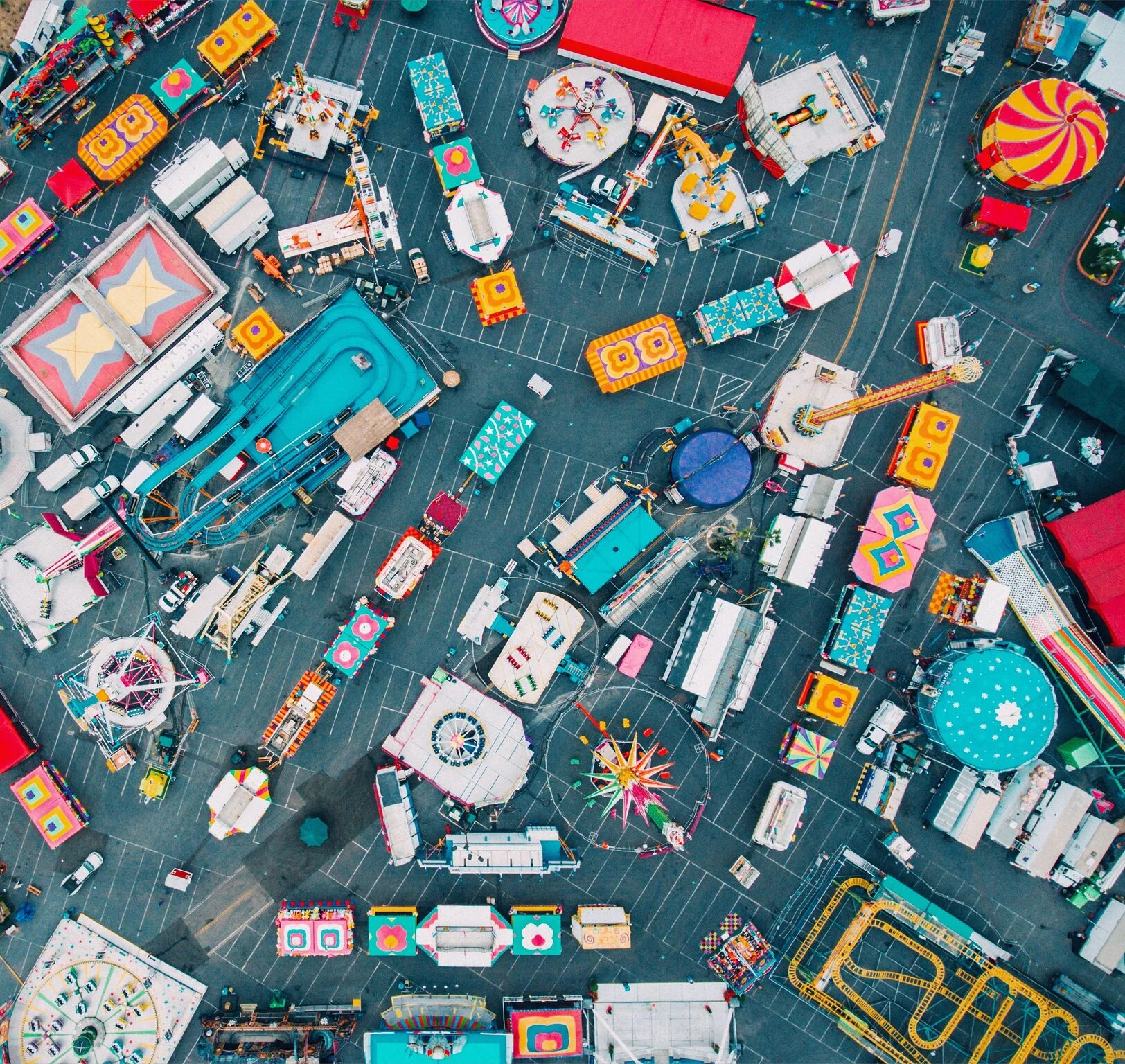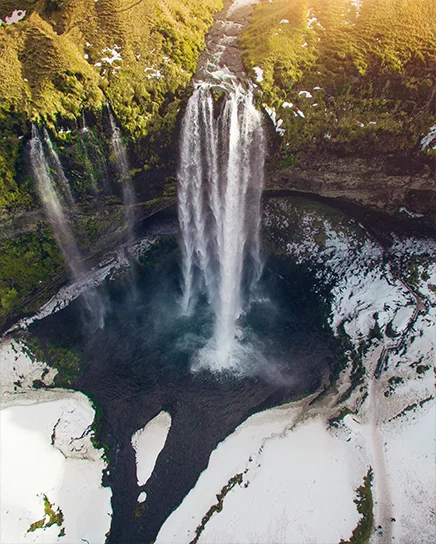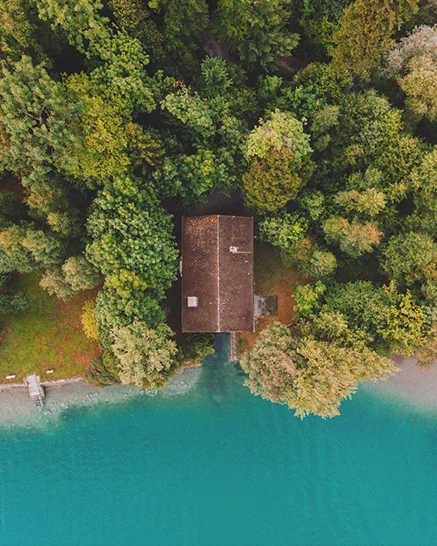Drone Photographer Dirk Dallas: "We really are small dots in the grand scheme of things"
© Dirk Dallas
"What’s really interesting about shooting from the air is that it truly is humbling for me. As soon as I take that drone up, even just 100 feet, everything looks so small. You can barely see me. I’m now a speck. It’s like this Godlike view of the world, and I’m like, Wow. We really are small dots in the grand scheme of things, right?"
By Hannah Loesch
Southern California-based photographer Dirk Dallas had been flying various electric helicopters and radio controlled airplanes recreationally for over ten years before he decided to make the leap into commercial drone photography in 2013. It was with the purchase of his drone that his eye for photography and his interest in flying merged into a career, and made him a leader in the world of aerial photography. Today, Dallas shares his photographs, as well as tips and tricks that he says he wishes he had access to when he first started out, with an online community of people brought together by a shared passion. He says his primary goal for the From Where I Drone blog is to create a helpful resource for those who are interested in getting started with aerial photography and cinematography, and to use aerial imagery to inspire the future leaders in the field.
© Dirk Dallas
Hannah Loesch: What I think is so interesting about this is that you can’t just be a skilled drone pilot, and you can’t just have a good eye. You have to be both.
Dirk Dallas: [laughs] Yeah, you’re right. You’re totally right. Exactly!
© Dirk Dallas
HL: You’re an FAA Part 107 drone pilot. What is the process for an aerial photographer to become a member of the Federal Aviation Administration?
DD: What that basically means is I had to study. I think I studied for maybe 35 hours or so. So I had to study a whole bunch of different things about airspace, and the weather, and safety related to the drone, and various things like that. And then I took a test at a local airport through a flight school, and passed the test. So that meant that they would send me my license, which sort of looks like a driver’s license. I now have a form of identification saying I’m a certified drone pilot with the FAA. It’s something that you need to plan for. It’s not something that you can just cram for the night before.
© Dirk Dallas
HL: Now, a lot of people have drones that they fly around their backyards for fun. Is there a point where you need to become licensed to fly? Or can you be an unlicensed aerial photographer and take the kind of drone images you do?
DD: As soon as you cross the line from being a hobbiest, and you’re doing any type of commercial work—basically, someone’s paying you—you need to be licensed. So, if someone just wants to take photos and videos for fun in their backyard, or they want to go to the beach, or wherever, they don’t need to have that license if they’re not selling it.
© Dirk Dallas
HL: That makes sense. Every person who flies a drone recreationally has a story of their drone ending up on the roof, or in a swimming pool. Do you have any stories like this? In your case, I imagine your drone could very well end up in the middle of the ocean, right?
DD: Yeah, it totally could! Back when I first started flying, even before there was the option to get a license, I was flying at a park. Back then it was even more rare to see someone flying a drone, so it was getting attention, people were asking me questions. As I was flying, I was getting distracted by the dog of one of the people I was talking to. He kept running in between my legs, so I kept moving around trying to get him off me, and in doing so, it just kind of distracted me from watching my clock, because I timed how much battery was left. Everything’s different now, you just see it in the screen on your remote, but you used to not have all the access to the controls, so I'd have to time it with my phone. I missed the window that I needed to bring it back, and it ended up getting stuck in a tree pretty high up. My first drone cost me like $2500, so I wasn’t gonna leave it in the tree, but I couldn’t climb it. The only thing I could think of was there was some guys who were playing football at that park. I just said, “Hey! Can one of you guys come over here and help me get my drone down by knocking it out of that tree? I’ll give you guys fifty bucks.” It took about 25 minutes, and we’re all probably about to give up. You can only throw it so many times before you lose hope. And then one of the guys knocked it down. I gave him fifty bucks, and I got my drone back. It came crashing to the ground, nobody was able to catch it, but I picked it up, kind of dusted it off, and it was still able to fly. So that’s the end of my story. [laughs]
© Dirk Dallas
HL: Well, that’s good! It had a happy ending.
DD: Yeah! So, for me me, ever since that...I feel like I was really safe before, but even that encounter just made me realize I really have to be on the ball for everything, and I can’t be distracted even by the smallest thing. I was to take it seriously and be a good example.
© Dirk Dallas
HL: What sort of response have you gotten from your website dedicated to teaching people about drone photography?
© Dirk Dallas
DD: I’ve gotten amazing feedback. I think my whole goal in starting it in 2015 was that there was really no resources for me to learn answers to all the questions I had. It was still so new, and there wasn’t a lot of information, and there was a lot of confusion about the rules. So I would spend hours researching this stuff. Along with being a photographer and a designer, I’m a professor, so I teach. So my heart is to teach. I love teaching. And so I figured, why not just start a website to help people out. And that way, every now and then when I would get an email or a message, I wouldn’t have to individually reply, I could just direct them to a full-blown post that would have pictures and explain it better than I could in an email. I think people really appreciated that, because it could kind of be a one stop shop for getting up and running. And then, with the fromwhereidrone hashtag, what I found was that people really wanted community. They wanted to find like-minded people who were into the same thing. They wanted to find people who inspire them for when they went out and did their next flight, or something like that. And for me, it sounds so funny, but I could literally say that through a hashtag I have found, like, all my friends. It’s really been a thing that’s connected us.
© Dirk Dallas
HL: Especially because you’re a professor, it’s probably something you’d rather show than describe, but what can you tell me about your process for capturing shots?
DD: First thing is, I like to go onto Google Earth, and I like to do a little bit of research on the location I’m gonna shoot at. That usually includes me figuring out where I might be able to park, and then figuring out where I might be able to take off and fly without being near an obstacle like a tree, or a power pole. So I kind of have a lay of the land before I shoot. And then I like to look at what’s been done there before to see what is inspiring, or what might I do differently, or if it’s more of a familiar location, how I can bring a unique angle or perspective to it. I also like to check and see what the rules are for that area, so I’m informed and not wasting my time. When I get there, I get all my stuff out, figure out my game plan, and assess the situation. Then I take off, and I fly. I usually have a couple things in mind that I want to capture, and then there’s always the spontaneous things that i didn’t really think of, and that kind of mixes things up for me. I always like to shoot photos, but I also like to take videos of the spots that I’m at too, even if it’s just for a little bit. I like to build up my video library. And I bring it back and transfer if to my computer, and I edit, and post.
HL: How much post-processing do you do after the photos are taken?
DD: I tend to not do too much. I don’t have a problem with people who do, but I think for me, it’s…I used to spend a lot more time editing, and I think now it’s just down to time. I don’t have as much time anymore. I have a family now, and life is busier. So I just do what needs to be done to kind of convey the idea, and the feeling that I’m going after. And I feel like usually that’s just some basic color correction, and toning, and a crop. And that’s it.
© Dirk Dallas
HL: The fact that you have over 300,000 followers on social media shows that people are really fascinated with this type of photography. What do you think it is about seeing the world from above that’s so special?
DD: That’s a really good question. I think a lot of people kind of relate to my sentiments when I first got the drone, or right before I got the drone. I was feeling...you know, this was 2014, and I was feeling a little discouraged. I felt like my feed kind of looked the same, I kind of was getting tired of shooting the same stuff. You know, I needed something new. I needed a new challenge. For me, just the challenge of figuring out how to fly this thing and capture imagery with it was a big challenge, but then once that was tackled, just figuring out how to create interesting imagery from the air was interesting, because things are a bit different. Like, you still need to think about shutter speed, and ISO, and composition. All those things that an on-the-ground photographer would need to consider. But what’s different is everything is so wide up there, and a subject is really small, so things can start to look really abstract, really quick.
© Dirk Dallas
HL: That’s really true, I haven’t thought about that. Same as when you zoom in really close on something, when you get far away from something, it does become abstract. And what I like about your photos is that they show us what that world actually looks like above, so you don’t want it to be abstract.
©Dirk Dallas
DD: I realized pretty quick that unless I’m going for a shot that is kind of like a pattern, or something that’s just visually interesting because of symmetry, that I need to find a subject. That’s one of the first things I try to do. If it’s a person, that’s great. Maybe it’s a car. I tend to have a car in a lot of my stuff. But I’m always trying to think of how I can properly show scale so that my viewer can understand what this is. I had to kind of learn and work through how to create interesting imagery from the air that can still illicit a response, that can still suggest a feeling, an idea. And so for me, that was a really exciting challenge. For the viewer, I think maybe what’s interesting is that it’s still unique. It’s really easy to shoot a photo on the ground, but it’s still really unique to capture something from the air. Seeing that different perspective feeds into our desire for seeing something new, and something different. That’s why we open our phones every day, right? We want to see something different from the previous day. So I think, for the time being, the drone provides one of those ways to do that. And to take it even further, what’s really interesting about shooting from the air is that it truly is humbling for me. As soon as I take that drone up, even just 100 feet, everything looks so small. You can barely see me. I’m now a speck. It’s like this Godlike view of the world, and I’m like, Wow. We really are small dots in the grand scheme of things, right?
© Dirk Dallas
© Dirk Dallas
© Dirk Dallas






















